Part 2 Of Cino Art Tips Is Some Basic Tips On Shape And Silhouette Design Which Are Also Principles I



Part 2 of cino art tips is some basic tips on shape and silhouette design which are also principles I think about a lot :)
(also i'm so sorry i chose comic sans to write this in idk what i was thinking but i already flattened the layers)
i don't have any other obvious tips off the top of my head rn but feel free to ask anything you are curious about! i love getting asks uwu
More Posts from Donutdomain and Others
Writing Tips
Descriptions in Between Dialogue
✧
⤠ how characters interact with the environment
⇝ moving something, picking something up, looking somewhere
⤠ how the environment interacts with the characters
⇝ weather, other character’s actions or movements
⤠ gestures
⇝ facial expressions, body language
⤠ shifts in position
⇝ standing, sitting, leaning, shifting weight, crossing arms/legs
⤠ physical reactions
⇝ body temperature, fidgeting, heart rate, character quirks
⤠ environmental descriptions
⇝ descriptions using the five senses, setting, character’s appearances
⤠ internal dialogue
⇝ emotional reaction to what was said, reflection of past experiences, connections to other characters/settings/actions
➵ I want to reiterate… descriptions using the five senses ; when in doubt, think of the five senses your character is experiencing and pick what best moves the story forward


HiPOD 22 Apr 2022: Layers to the West of Gale Crater
The objective of this observation is to examine thin layers in the Nepenthes Mensae region. Because this location is close to Gale Crater, these layers may one day be compared to those currently being studied by the Curiosity rover. This scene was also imaged by the Context Camera onboard MRO.
Nepenthes Mensae is a plateau, whose name derives from Greek for a drug that quells all sorrows with forgetfulness. “Nepenthe” literally means “without grief” (ne = not, penthos = grief) and was a potion given to Helen by an Egyptian queen in Homer’s “Odyssey.”
Enhanced color image is less than 1 km across; black and white is less than 5 km.
ID: ESP_055565_1750 date: 4 June 2018 altitude: 265 km
NASA/JPL-Caltech/UArizona


Some people asked how I paint hair, so I made this very simplified explanation, but I hope it helps someone.
The @ is my twitter btw ^~
Pink Robin Bird

The pink robin is a small passerine bird native to southeastern Australia.

Its natural habitats are cool temperate forests of far southeastern Australia.

Like many brightly coloured robins it is sexually dimorphic.

Measuring 5.3 in in length, the robin has a small, thin, black bill, and dark brown eyes and legs.

The male has a distinctive white forehead spot and pink breast, with grey-black upperparts, wings and tail. The belly is white.

Its range is the forests of southern Victoria and neighbouring parts of South Australia and New South Wales, and Tasmania.

Pink Robin Bird
I knew that the eruption/explosion of Krakatoa was the loudest sound in recorded history, but I couldn’t quite grasp how loud until I got a couple details of perspective. This was in 1883.
The shock wave ruptured the eardrums of sailors 40 miles away.
The explosion was heard more than 3,000 miles away, and recorded all over the world.
It made tsunamis nearly 100 feet high.
Now picture this happening in modern times, with modern communications. Not only would there be uncountable videos and whatnot, but the timing is what really gets me. Imagine you’re going about your day, scrolling social media, and posts start pouring in about an apocalyptic volcano on the other side of the continent. The news are full of it. You spend ages glued to the screen; this isn’t remotely close to you, but it’s a big deal, and you know people who live closer to it.
Three hours later, something explodes outside. Propane tank? Car fire? Some jackass with illegal firecrackers?
Nope. That was the sound wave, finally reaching you.

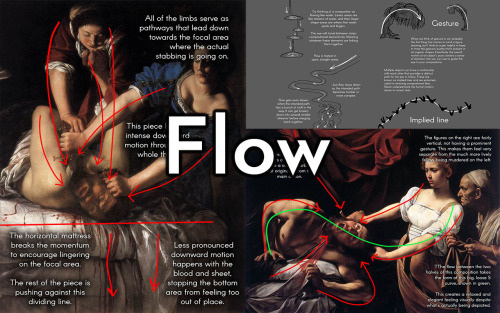
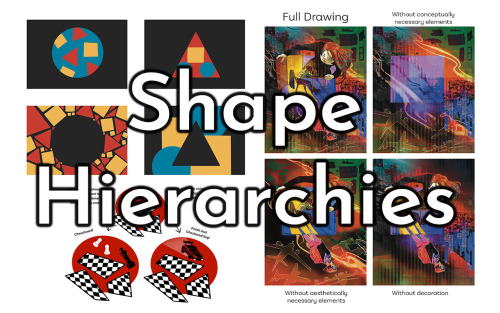
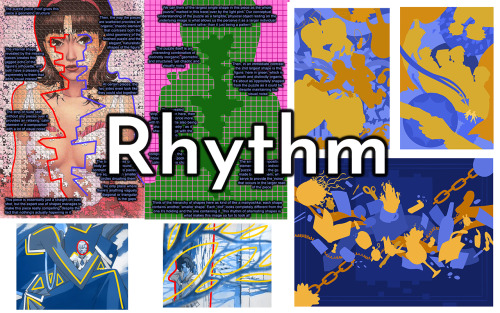
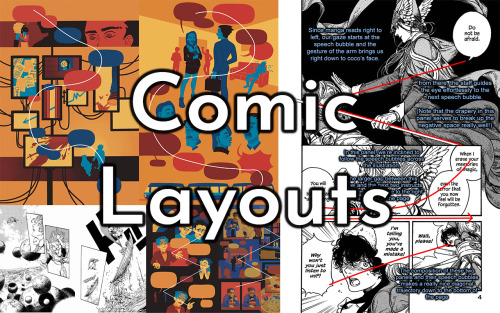
Hello everyone! after a couple of months of work on this beast of a thing, the first draft of my promised writeup on understanding composition is finally ready! This badboy is almost 15,000 words, and over 150 pages long. In these images, you can see a couple of examples of the kind of subject matter I’ll be covering, but it’s very comprehensive.
This is currently available on my Patreon starting at just $2!
I think what I offer is a pretty unique take on composition, and it’s geared to be understood without a lot of consideration for the more finnicky technical elements of drawing, so if that’s part of art you have trouble with you might find some answers in my approach. Using my own art and examples from various disciplines and eras, I break down how to understand why a composition does - or doesn’t - work, all building to a toolset that lets you have control over your own compositions with precision and intent.
A sincere thank you to anyone who takes the time to look at it, and at the end of the day, always remember one fundamental rule of art:


While it is true that photons have no mass, it is also true that we see light bend around sources with high mass due to gravity. This is not because the mass pulls on the photons directly, but instead because the mass warps the space-time through which the photons travel. Imagine a bowling ball on a mattress. The ball is a massive object — say, the Sun — and the mattress represents space-time, in which it sits. (Of course, space-time is four-dimensional, but it’s a bit harder to imagine that!) When you place the bowling ball on the mattress, it deforms the surface. If a grid were drawn on the mattress, you would see the grid deform, so the straight lines of the boxes were no longer straight. The same is true for a star sitting in space-time — the star deforms space-time around it, causing it to curve toward the star. Now imagine a marble; this represents a photon. If you roll the marble in a straight line on the mattress and it comes too close to the bowling ball, the marble will curve because the mattress it’s traveling on dips and curves around the bowling ball. This is what happens to light traveling through space: When it comes too close to a massive object, it encounters warped space-time and curves not because it’s being pulled by gravity, but because the space-time it’s traveling through is curved, so its “straight” path becomes a curved, bent one.
. . Keep Supporting and Following us . 👉👉👉👉 @unrevealedfiles 👉👉👉👉 @unrevealedfiles 👉👉👉👉 @unrevealedfiles 👉👉👉👉 @unrevealedfiles 👉👉👉👉 @unrevealedfiles . 𝒇𝒐𝒓 𝒎𝒐𝒓𝒆 𝒇𝒂𝒔𝒄𝒊𝒏𝒂𝒕𝒊𝒏𝒈 𝒔𝒄𝒊𝒆𝒏𝒄𝒆 𝒂𝒏𝒅 𝒕𝒆𝒄𝒉𝒏𝒐𝒍𝒐𝒈𝒚 .
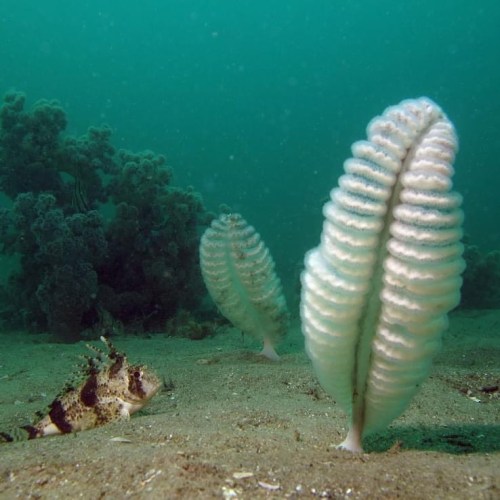
Did you know? There are about 300 species of sea pens that can be found swaying on the ocean floor around the world.🪶
You might be surprised to find out that this feather-like structure is actually a colony of polyps that work together to survive. Different polyps have different responsibilities depending on their location on the body. There are feeding polyps that catch plankton, as well as polyps that circulate water to keep the colony balanced and upright.
Photo: Richard Ling, CC BY-NC-ND 2.0, flickr; kidney sea pens (Sarcoptilus grandis) pictured
#AnimalFacts #OceanLife #SeaPen #Ocean #nature #fish #dyk #MarineLife #MarineBiology https://www.instagram.com/p/Cb_UKlsLemR/?utm_medium=tumblr
Your writing will always feel awkward to you, because you wrote it.
Your plot twists will always feel predictable, because you created them.
Your stories will always feel a bit boring to you, because you read them a million times.
They won't feel like that for your reader.
-
 yenoodlethings reblogged this · 3 weeks ago
yenoodlethings reblogged this · 3 weeks ago -
 opossumonashelf liked this · 3 weeks ago
opossumonashelf liked this · 3 weeks ago -
 solar-edens liked this · 3 weeks ago
solar-edens liked this · 3 weeks ago -
 zephra85 liked this · 1 month ago
zephra85 liked this · 1 month ago -
 theflotinghead reblogged this · 1 month ago
theflotinghead reblogged this · 1 month ago -
 theflotinghead liked this · 1 month ago
theflotinghead liked this · 1 month ago -
 loxafox liked this · 1 month ago
loxafox liked this · 1 month ago -
 mini-faust liked this · 1 month ago
mini-faust liked this · 1 month ago -
 not-tumbling reblogged this · 1 month ago
not-tumbling reblogged this · 1 month ago -
 vnillacone reblogged this · 1 month ago
vnillacone reblogged this · 1 month ago -
 monsterr-menagerie liked this · 1 month ago
monsterr-menagerie liked this · 1 month ago -
 moxruby66 liked this · 1 month ago
moxruby66 liked this · 1 month ago -
 krislgfox liked this · 2 months ago
krislgfox liked this · 2 months ago -
 skyren0-0 liked this · 2 months ago
skyren0-0 liked this · 2 months ago -
 galacticb0ba liked this · 2 months ago
galacticb0ba liked this · 2 months ago -
 otomecultist liked this · 2 months ago
otomecultist liked this · 2 months ago -
 softypyro liked this · 2 months ago
softypyro liked this · 2 months ago -
 rosetyler42 reblogged this · 2 months ago
rosetyler42 reblogged this · 2 months ago -
 rosetyler42 liked this · 2 months ago
rosetyler42 liked this · 2 months ago -
 purplechick032 reblogged this · 2 months ago
purplechick032 reblogged this · 2 months ago -
 purplechick032 liked this · 2 months ago
purplechick032 liked this · 2 months ago -
 confusedernestvanburg reblogged this · 2 months ago
confusedernestvanburg reblogged this · 2 months ago -
 confusedernestvanburg liked this · 2 months ago
confusedernestvanburg liked this · 2 months ago -
 leucoma liked this · 2 months ago
leucoma liked this · 2 months ago -
 cosmic-philanthropy liked this · 2 months ago
cosmic-philanthropy liked this · 2 months ago -
 theconnectedcode liked this · 2 months ago
theconnectedcode liked this · 2 months ago -
 sylviegirly reblogged this · 2 months ago
sylviegirly reblogged this · 2 months ago -
 smithersdoctrine liked this · 3 months ago
smithersdoctrine liked this · 3 months ago -
 polystarangel liked this · 3 months ago
polystarangel liked this · 3 months ago -
 crunchybeards liked this · 3 months ago
crunchybeards liked this · 3 months ago -
 knight-kore liked this · 3 months ago
knight-kore liked this · 3 months ago -
 thebadchoicemachine reblogged this · 3 months ago
thebadchoicemachine reblogged this · 3 months ago -
 robinwatchtower liked this · 3 months ago
robinwatchtower liked this · 3 months ago -
 sythesizeher reblogged this · 3 months ago
sythesizeher reblogged this · 3 months ago -
 sythesizeher liked this · 3 months ago
sythesizeher liked this · 3 months ago -
 vladkathekto-to liked this · 3 months ago
vladkathekto-to liked this · 3 months ago -
 belinda-belladonna-nyx reblogged this · 4 months ago
belinda-belladonna-nyx reblogged this · 4 months ago -
 bumper2023 liked this · 4 months ago
bumper2023 liked this · 4 months ago -
 a-grim-hell-of-a-ink676 liked this · 4 months ago
a-grim-hell-of-a-ink676 liked this · 4 months ago -
 fwescy0 liked this · 4 months ago
fwescy0 liked this · 4 months ago -
 juju-in-the-rockies liked this · 4 months ago
juju-in-the-rockies liked this · 4 months ago -
 lubie-subarubie reblogged this · 4 months ago
lubie-subarubie reblogged this · 4 months ago -
 dusstey liked this · 4 months ago
dusstey liked this · 4 months ago -
 24337556 liked this · 4 months ago
24337556 liked this · 4 months ago -
 froopinghiddles reblogged this · 4 months ago
froopinghiddles reblogged this · 4 months ago -
 lastfrogstanding liked this · 4 months ago
lastfrogstanding liked this · 4 months ago

I just reblog fun facts/tipsScience, nature, geology facts etc! + art & writing tips!
67 posts
